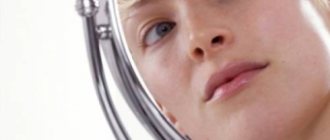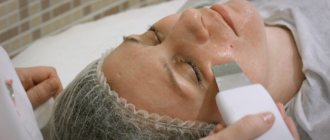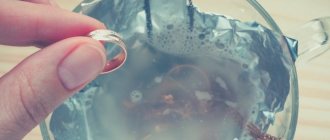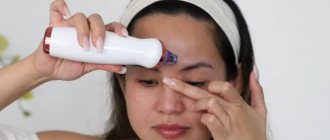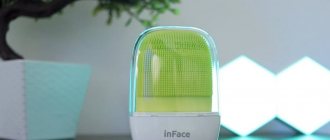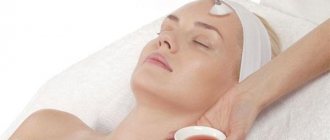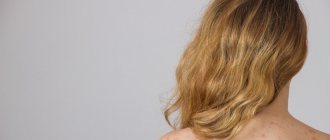Indications
The primary indication for any cleansing is contamination of the skin of the face. Mechanical cleaning is a manual procedure using simple medical products, recommended for severe dirt, numerous blackheads and sebaceous plugs that clog enlarged pores. .
With its help you can eliminate blackheads, pimples with white heads and acne; it is great for problematic and oily skin with both superficial and deep impurities.
Ultrasonic cleaning has a less wide range of indications. With its help, blackheads, impurities in the pores and dead skin cells accumulated on the surface are eliminated. A procedure of this kind is indicated for moderate or mild problems; the effect is only on superficial defects, while deep ones are not affected. That is why ultrasonic cleaning is recommended for patients with skin in good condition, in order to maintain the already achieved effect.
Expected results
You should not assume that cleaning is just a way to remove dirt. After mechanical action, the skin acquires a healthier color, formations of various nature disappear, and a general improvement of the skin is noted. Of course, all these changes are possible only if the manipulations are carried out correctly.
The procedure, carried out using ultrasound radiation, in addition to eliminating surface impurities, can enhance local blood circulation and supply skin cells with oxygen. In addition, it has a gentle massaging effect, leading to accelerated skin regeneration and active collagen production. As a result, the facial skin becomes not only cleaner, but also tightened, and fine wrinkles disappear.
Ultrasonic facial cleansing
Procedure execution algorithm
The algorithm for mechanical and ultrasonic cleaning has many similarities and differences. Both procedures begin with preliminary cleansing of the skin.
from decorative cosmetics, creams, as well as any surface contaminants.
Then, according to indications, light peeling
, eliminating dead cells from the surface of the skin; it is carried out to facilitate access to impurities.
The next step is steaming the skin
. The purpose of the treatment is to maximize the opening of pores for the subsequent accelerated removal of blackheads and sebaceous plugs. It can be carried out using masks, steam baths, and special devices.
The main stage is processing.
During mechanical cleaning, it is carried out by hand, as well as using special products made of medical steel (needles, spoons). The principle of action is extremely simple and consists of mechanical pressure on problem areas in order to push impurities to the surface of the skin. Such manipulations can be quite painful, but no anesthesia is provided during the procedure.
The effect during ultrasonic cleaning is more pleasant and is not associated with any discomfort for the patient. The principle of operation is to knock out contaminants from the pores using acoustic vibrations.
At the end of the procedure, it is necessary to carry out antiseptic treatment of the skin in order to reduce the secretion of sebum and eliminate possible microorganisms. Many cosmetologists prefer to complete the procedures with therapeutic masks that soothe the treated areas of the face.
In some cases, mechanical and ultrasonic cleaning can be combined and carried out together in one session; this procedure is called combined and allows for maximum removal of contaminants.
Ultrasonic
Many people consider this cleaning to be better than others, since it is quite effective and less traumatic than, for example, manual cleaning. It is recommended to carry out such cleansing for heavily contaminated skin.
Ultrasonic facial cleansing is carried out using a special ultrasonic device. High-frequency sound vibrations affect the epidermis, which contributes to:
- opening of pores;
- removing contaminants from them;
- exfoliation of the stratum corneum.
Also, high-frequency sound vibrations help improve blood circulation and tonify the epidermis, which has a good effect on the quality of the skin. For many women, ultrasonic facial cleansing is better than others, as it does not cause pain or injury to the skin.
Carrying out the procedure
- At the initial stage, it is necessary to get rid of decorative cosmetics and surface contaminants. Then it must be wiped with a disc soaked in tonic or lotion.
- There is no need to carry out a procedure for steaming the skin, since ultrasonic cleansing is carried out on individual areas that need cleansing.
- At the end of the cleansing session with the device, the person needs to be disinfected using a product or alcohol-containing tonic.
- At this stage, it is necessary to apply the mask necessary for relaxation, restoration, nutrition and hydration.
- After washing off the mask, apply moisturizer.
The main advantage of this cleansing method is the absence of trauma and complete painlessness during the procedure. Also, after ultrasonic cleaning, the dermis is not subject to inflammation, swelling or redness. This type of cleansing is optionally performed not only on the face; you can do this cleansing on other parts of the body.
Indications
Ultrasonic cleansing should be done by people with:
- seborrhea;
- skin prone to oiliness;
- comedones;
- acne and post-acne;
- rough keratinized layer of the epidermis;
- scar changes;
- strong pigmentation;
- lymphostasis;
- hypotonic dehydrated skin;
- wrinkles and other age-related changes.
Contraindications
This method of cleansing has a number of contraindications. It is prohibited to carry out such cleaning sessions if there is:
- cardiovascular pathologies;
- high blood pressure;
- tumors.
Contraindications
Despite the high level of injury and pain, mechanical cleaning has a minimum of contraindications. Thus, the procedure is not carried out in case of violations of the integrity and dermatological diseases of the skin in the active stage (dermatitis, eczema, psoriasis, etc.), numerous inflammations, as well as high blood pressure and asthma.
But ultrasonic cleaning, which seems safe at first glance, has many more restrictions. It is prohibited when:
- Pregnancy.
- Fever.
- Presence of pacemakers, braces, pins and crowns.
- Epilepsy.
- Pathologies of the cardiovascular system.
- Thrombophlebitis.
- Cuperose.
- Silicone and gel implants.
- Oncology.
Many people know what facial cleansing is, but not everyone knows why it is needed, and few understand the differences between the methods of the most common salon procedure. The question of what is better and more effective – mechanical or ultrasonic cleaning – worries many.
Reviews from people who have tried facial cleansing on themselves vary from enthusiastic ones, who praise it as a must-have weekly procedure, to skeptical ones, who see no difference before and after cleansing, and, finally, there are those who were harmed by it. What's the matter? Is such a popular cosmetic procedure really just another marketing myth? Why is it worth doing facial cleansing? And, most importantly, which method should you choose to get the desired result? Specialists from the SERENDIPITY Beauty Center, Almaty, will help us understand all the intricacies.
Why do you need facial cleansing?
In fact, why is cleaning necessary, especially if the age is far from puberty? After all, everyone knows from school biology textbooks that the appearance of acne and other unpleasant skin inflammations is part of the wonderful process of growing up and ends by the age of 18-25. But is this really so?
Dermatocosmetologist at the SERENDIPITY Beauty Center Tatyana Dzhanalieva comments: “Life in a metropolis implies far from ideal conditions for our skin and the body as a whole. Dirty air in Almaty, water quality in Astana - living in the city usually means a polluted living environment. The next factor is the quality of modern food with a large preponderance of fatty foods that have undergone additional processing, and a deficiency of light proteins in the form of fish, as well as fresh vegetables and fruits.
This is followed by improper skin care: frequent and aggressive exposure to soap or alcohol-containing cleansers. And finally: the influence of hormonal, climatic, seasonal and age factors also leads to increased secretion of the sebaceous glands and the production of excess sebum - sebum. And clogged pores lead to local inflammation, blackheads and other unpleasant manifestations on the skin. The skin is not able to cleanse itself of dirt on its own. Facial cleansing can be compared to artificial respiration: cleansed pores again get a chance to actively absorb both oxygen and nutrients. Accordingly, the effect of any cosmetic procedures increases significantly after the basic facial cleansing procedure.”
How to properly cleanse your face?
So, it is clear that the skin needs regular cleansing. The next question that requires an answer is how to do it right?
“The need for regular skin cleansing is undeniable. However, if it is carried out incorrectly, it threatens with much more serious problems, not only of an aesthetic nature, warns Natalya Bozhko, a specialist at the SERENDIPITY Beauty Center, dermatocosmetologist. – Harm from facial cleansing done unprofessionally can lead to the following complications: hematomas, scars, age spots and atheromas. These are the most common complications that one has to deal with after a person has undergone facial cleansing done by non-professionals. A person who is not versed in anatomy and does not know the basic rules of facial cleansing can, through his manipulations, cause cosmetic complications and cause serious damage to health, including inflammation of the meninges.”

It is the consequences of unprofessional facial cleansing that lead to the emergence of myths about the uselessness and even harm of this procedure. It is necessary to follow two simple rules: have your face cleaned only by specialists, and also avoid this procedure if there are inflammatory processes on the skin in order to prevent the spread of infection from affected areas to healthy ones.
Mechanical or ultrasonic cleaning?
A consultation to determine the degree of contamination, characteristics and problems of your skin, along with receiving detailed information about your lifestyle and home care rituals, will allow a specialist to choose the cleansing method that suits you.
Mechanical facial cleansing involves deep cleansing of the skin. Pre-cleansed skin is steamed using finely dispersed steam, which is ozonized for additional bactericidal effects. Then the specialist removes the dirt pointwise, placing his fingers at a special angle. This is the most effective technique for cleansing impurities that are deep in the pores. As a result, transient redness of the skin is possible, which can last from several hours to several days.
Among fans of cosmetic procedures, the debate continues about which facial cleansing is better - mechanical or ultrasonic and what are the advantages of each of them? The fact that the dermis needs to be systematically cleansed is no longer news to anyone - eliminating peeling, blackheads and other skin problems has become commonplace. How to choose the appropriate type of cleansing, and what are the contraindications for each of them?
Mechanical facial cleansing vs ultrasonic: all the pros and cons

Expert opinion
Sabrina Ismailova, cosmetologist, dermatologist and founder of the See Beauty cosmetology clinic “The skin of the face is endowed with a secretory function.
This means that each pore is equipped with a sebaceous gland that produces sebum (sebum). When excessive sebum accumulates in a pore, its walls can stretch. In this situation, the pores are visualized, become obvious and unaesthetic. Also, with excessive accumulation of fatty lipids in the pores, blockage of the excretory ducts occurs, which, in turn, can lead to hardening and the formation of comedones. This situation is a favorable environment for further inflammation and bacterial growth. To avoid such an unpleasant situation, as well as to solve the existing problem with clogged and possibly inflamed pores, regular facial cleansing procedures are necessary.” Facial cleansing is for everyone. We wash and cleanse our facial skin ourselves every day. From time to time it is necessary to do this on a professional level. Essentially, this is the same as daily dental hygiene and interval visits to the dentist for prevention and cleaning of stones.
We cannot clean our pores perfectly on our own; that’s what cosmetologists are for. Of course, patients who have naturally oily facial skin and enlarged pores will especially need cleansing, but this does not negate the fact that those with other skin types should not neglect this procedure.
How often should I do it?
Cleaning can be done no more than once a month. Moreover, this is the optimal period to achieve regression of rashes, if such a problem exists. A break of 30 days will also allow the skin to recover as much as possible between treatments. If the problem of rashes is not acute, then as a preventative measure, facial cleansing can be done once every 3-4 months - depending on individual characteristics.
It's best NOT to do facial cleansing during the hot summer months, but it's not taboo. If the patient strictly follows all the doctor’s recommendations for facial skin care after the procedure, then it is possible. It is also important for women to take into account the cycle when choosing a day for the procedure. As you know, at the beginning of the cycle, the vessels are in a weaker state than usual. This is important to consider, especially during mechanical cleaning.
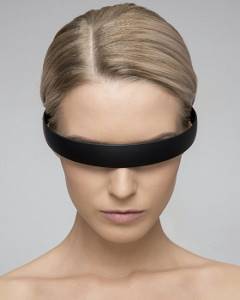
Ultrasonic cleaning
Pros:
Among the main ones, the procedure is practically painless and atraumatic. The effect of ultrasound not only helps exfoliate the upper epidermal layer of keratinized skin particles and smoothes the relief, but also provides a kind of light vibration massage that helps improve blood supply.
Minuses:
The ultrasound procedure is not able to cope with closed comedones located deep in the pores. In addition, it is practically powerless even if the excretory channels (pores) are too narrow, and excess sebum has accumulated in them. And, of course, ultrasonic cleaning will not solve the problem of inflammation that needs to be opened. In these cases, this form of cleaning will be ineffective.
Mechanical cleaning
Minuses:
One of the main disadvantages of mechanical cleaning is long-term (compared to ultrasonic) rehabilitation. Depending on individual characteristics, it can last from two to five days. The procedure is also quite painful, as it involves numerous point pressures with the fingers or the use of tools such as needles, loops and all kinds of spatulas.
Pros:
Moreover, it is mechanical cleaning that can cope with “complex”, heavily clogged excretory canals, as well as inflamed comedones.

How to care for your face after cleansing?
After the facial cleansing procedure, the specialist always gives individual recommendations to patients depending on their skin type. However, they all include mandatory thorough cleansing of the skin using products that usually contain alpha and beta hydroacids, as well as antibacterial and regenerating components.
A lotion must be prescribed for constant use during rehabilitation, as well as a regenerating cream, which, along with the above-mentioned components, must contain natural moisturizers. The fact is that during the cleaning process, the water-lipid mantle of the skin is depleted, so it must not be allowed to become dehydrated.
Contraindications
Facial cleansing is contraindicated for patients with second and third degree acne, as well as those with multiple purulent formations on the skin in acute form. In such cases, treatment is primary, and only then, at the stage of remission, cleaning is prescribed. Otherwise, there is a chance to provoke even greater inflammation and even blood poisoning.
Facial cleansing is also contraindicated for patients with rosacea and rosacea, since this disease causes damage and destruction of the capillary walls. The procedure can aggravate this process and make it irreversible later.
When is cleaning needed?
When is mechanical and ultrasonic facial cleansing necessary? Such techniques will benefit the integument if there are a number of problems:
- acne;
- too oily dermis;
- presence of black dots;
- closed comedones located under the skin;
- scars, scars, pimple marks;
- the first signs of withering of the dermis;
- dull color of the epidermis;
- peeling of the dermis, dryness;
Hyperpigmentation is also an indication for cleansing skin procedures.
Mechanical facial cleansing
To understand the difference between mechanical facial cleansing and ultrasonic cleaning, you should carefully study the features of each technique.
Mechanical cleansing is based on the deepest possible cleansing of the dermis. This manipulation is carried out manually or using tools (Uno spoon, loops, etc.).
Indications and contraindications of the technique
- black dots;
- unhealthy color of the epidermis;
- acne;
- blackheads
For your information. Cosmetologists most often use mechanical manipulation on patients with oily dermis. This type of dermis is characterized by increased production of sebum (the oil secreted by the skin), resulting in the formation of acne and pimples on the skin.
It has a manual method and contraindications:
- high skin sensitivity;
- tendency to allergic reactions;
- skin diseases;
- dangerous large moles on the face;
- menstruation;
- herpes.
For your information. The preliminary stage of the manual cleansing technique is steaming the epidermis. Such manipulations are contraindicated for people with vegetative-vascular dystonia or bronchial asthma.
How to do it
There are several stages of the mechanical cleaning method:
- The client sits on the couch.
- The skin is steamed (often a vaporizer, paraffin masks, or a heat compress are used for this purpose).
- A special tool (Uno spoon or strainer attachment) is used to process contaminants.
- During the manipulation, dead particles of the dermis and sebum are eliminated. At the same time, blackheads, acne and other visual problems are squeezed out
- Treated areas are disinfected.
- If the problem areas cannot be eliminated with the instrument, the cosmetologist performs manual correction. By wrapping his fingers in a napkin, he removes the most stubborn stains and again disinfects the client’s skin.
- A soothing mask is placed on the client's face.
For your information. If the client has problematic dermis, he may need several cleansing sessions. This is due to the possible discomfort and pain felt with prolonged exposure to the skin of hands or tools.
Advantages and disadvantages
The advantages of mechanical cleaning include:
- depth of impact (this method is most effective due to its “thoroughness”);
- noticeable result;
- assistance in eliminating noticeable impurities in the dermis;
- Suitable for skin with large accumulations of blackheads and pimples.
The method also has disadvantages, including:
- aggressiveness of the impact;
- soreness;
- duration of the skin regeneration process;
- the likelihood of subsequent injury and scarring.
Mechanical
Mechanical facial cleansing involves applying pressure to the skin with your hands or special tools, with the help of which all accumulated dirt and comedones . This method is also called “manual”.
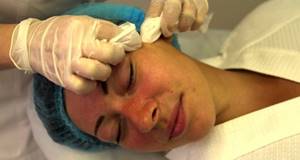
From the outside, the procedure resembles the process of squeezing out pimples and blackheads, but in the case of cleaning, all this happens in compliance with sanitary and hygienic rules. Facial cleansing is usually performed in a salon by an experienced cosmetologist.
Process:
- First, the face is cleansed of makeup and impurities, then steamed to open the pores and make it easier to remove impurities from them.
- After steaming, the face is wiped with an antiseptic (sometimes it is applied before steaming). A product is applied on top that helps loosen and soften the skin. Wrap the face with film for 15-20 minutes for the cream to take effect.
- Next, the doctor, with clean hands, begins to clean the pores of dirt by squeezing. Special cosmetic instruments can also be used for cleansing.
- After the procedure, the skin is again treated with an antiseptic and a soothing cream is applied.
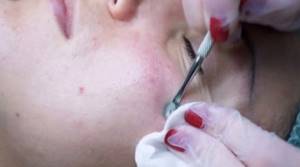
The procedure can be very painful , depending on the person's pain threshold. After the session, the skin may be very red and inflamed, but after a few days the results of cleansing will be noticeable - the face will become smoother and cleaner, inflammation will decrease, pores will narrow, and the skin will become less oily.
Ultrasonic facial cleansing
The difference in cleansing is the main difference between ultrasonic facial cleansing and mechanical cleansing.
During the process of ultrasound exposure, the integument is treated with a special device based on the action of ultrasound. The device effectively removes blackheads, dead cells, and sebaceous plugs. This method narrows pores and regulates the functioning of the sebaceous glands. Additionally, the device can produce a massage effect, renewing the dermis and stimulating blood circulation.
And yet - mechanical or ultrasonic facial cleansing - which is better? To make the final choice, you should learn about the intricacies of the ultrasound procedure, as well as contraindications to it.
Indications and contraindications
Ultrasonic cleansing of the skin is relevant if you have:
- acne;
- enlarged pores;
- black dots;
- dull color of the covers.
- greasy shine.
Ultrasound cleaning is contraindicated if:
- oncological diseases;
- epilepsy;
- diseases of the cardiovascular and nervous systems;
- asthma;
- hypertension;
- hyperpigmentation;
- damage to the skin of the face (wounds, scratches, abrasions, burns);
- tendency to allergic reactions.
Attention! The presence of intrauterine devices or a pacemaker in the patient’s body is also a contraindication to ultrasound cleansing. The procedure is also not performed during the rehabilitation period after the removal of braces, as well as chemical peeling or plastic surgery.
How is it carried out?
The ultrasound technique includes a number of stages:
- cleansing, makeup removal;
- light facial massage;
- distribution of a special mask over the skin to help open pores;
- application of a conductor gel;
- treatment of contaminants with an ultrasonic device.
- applying an anti-inflammatory mask with a calming effect.
The entire procedure takes approximately 30-40 minutes.
Advantages and disadvantages of the method
The advantages of ultrasonic cleaning include:
- lack of rehabilitation period;
- minimal list of complications;
- absence of pain and discomfort during the procedure;
- the possibility of combining cleaning with other procedures (peeling, using various masks, etc.).
The gentle effect of ultrasound is a basic plus, but at the same time it is also a minus of the procedure. This type of cleansing has the following disadvantages:
- multiple contraindications;
- high price compared to manual cleaning.
And although ultrasonic cleaning guarantees increased skin elasticity and ensures a healthy color of the skin, it is still inferior to mechanical cleaning in terms of efficiency. It is for this reason that such treatment is recommended for clients with minimal skin problems. If there are a lot of blackheads and pimples, ultrasound may not be effective. To obtain a stable result, it is necessary to carry out several sessions of such procedures.
Ultrasonic facial cleansing
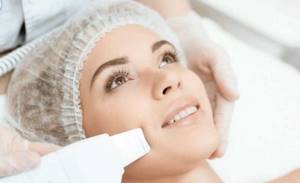
A relatively new and actively developing direction in cosmetology.
It involves getting rid of appearance defects using special equipment. The principle is to apply ultrasound to problem areas, that is, without damaging intervention.
The procedure is almost the same as mechanical cleaning, with the only big difference being that instead of mechanically picking out each comedone and squeezing out its contents, the doctor cleans the skin with a special ultrasonic scrubber.
Which cleaning is better: ultrasonic or mechanical?
So, what is better - mechanical or ultrasonic facial cleansing?
It is impossible to clearly determine which procedure is more effective, since everything depends on the condition of the integument. Heavy contamination is better cleaned using the instrumental method - it is suitable for large accumulations of blackheads and pimples and is characterized by the depth of action. An additional advantage of this manipulation is its low cost.
Ultrasonic cleaning will be a quick help when there is a small amount of dirt. This effect is ideal for dermis that are sensitive to instrumental or manual manipulation. The client must take into account the price of the procedure, as well as the fact that in order to obtain a lasting result, it is necessary to have several ultrasound cleaning sessions.
For your information. The ultrasound and manual methods can be combined. Such a complex effect is carried out after ultrasonic cleansing, after which the skin is cleaned manually or instrumentally.
Video: Facial cleansing in the salon. What is better: ultrasonic facial cleansing or mechanical facial cleansing?
Contraindications to mechanical cleaning
The techniques that a dermatologist uses during manual cleansing can bring a lot of negative pain - it’s worth thinking about the relevance of this procedure at certain moments in life.
In addition, mechanical cleansing of the face by a cosmetologist, even carried out under sterile conditions and as carefully as possible, still implies a violation of the integrity of the surface layers of the dermis and their potential infection, the formation of scar tissue if a person has health problems.
Contraindications:
- Viral inflammatory processes of a general nature (colds, flu, bacterial infections).
- Skin allergic manifestations, fungal infections.
- The occurrence of problems with the immune system, gastrointestinal tract, liver dysfunction and other similar diseases.
- Exacerbation of seasonal/food allergies.
- Temporary ailments in women associated with the individual cycle.

During pregnancy and during the lactation period, the skin, and the entire body as a whole, are able to respond to dermatological influences in the most unexpected way. After cleaning by a cosmetologist, your face may become inflamed and become swollen. Often in such delicate situations, the ladies’ temperature rose, and the wounds on the face healed slowly and with the formation of scars.
Note: a low pain threshold, as well as the presence of rosacea, is not a contraindication to procedures of this kind.
Conclusion
Mechanical and ultrasonic cleaning are effective procedures that help make the dermis clean, smooth and well-groomed. Aimed at the same result, these manipulations, however, differ in the peculiarities of their implementation. Thus, manual cleaning is the most effective way to remove contaminants, but at the same time the most aggressive. Ultrasound is an ideal method for patients with sensitive skin and minor skin problems. Both methods can be successfully combined to improve the quality of cleansing.
For various skin diseases with cosmetic defects, doctors sometimes resort to a procedure called clean face. It is indicated for enlarged and clogged pores, comedones, acne on the face, and deterioration of skin turgor.
Ultrasonic or mechanical facial cleansing - women choose between these two popular options most often. Each type of procedure has its own advantages and disadvantages. What is better: mechanical or ultrasonic facial cleansing?
Ultrasonic skin cleansing - what's the highlight?
Ultrasonic facial cleansing, the price of which is not much different from the mechanical cleansing method, is indicated for those ladies who do not suffer from severe rashes.
The ultrasonic hardware method has its advantages:
- Superficially, shallowly cleanses the skin surfaces of keratinized particles of the dermis, dirt, dust and sebum.
- Ideal for all skin types.
- The technique is absolutely painless and does not cause any discomfort when performed correctly.
- Refreshes, makes the dermis more pleasant to look at, and evens out its tone.
- Micromassage vibration movements, which are provoked by ultrasound, stimulate blood/lymph flow, improving the texture of the skin and removing minor swelling.
- Often, cosmetologists, before “walking” the skin with a scrub, apply a special serum or gel for ultrasonic facial cleansing to achieve maximum effect and better penetration of beneficial compounds into the deeper layers of the epidermis.
- The big advantage of this hardware technology is the complete absence of a rehabilitation period. Although you shouldn’t immediately apply a thick layer of powder/concealer to your face.
- After several regular procedures of this type, comedones, acne and other inflammations will disappear.
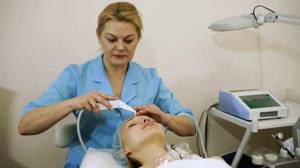
Often the cosmetologist does not even hesitate - which is better, mechanical or ultrasonic facial cleansing, but immediately advises combining these two procedures. Moreover, ultrasound performs a preparatory function before a deeper manual procedure.
It is interesting to know: such cleansing can be safely carried out at home - ultrasonic scrubbers are freely sold in online stores or in medical equipment.
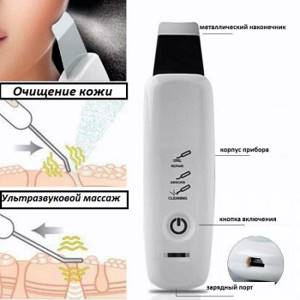
Mechanical cleaning
The classic method of cleansing, mechanical, has proven itself well. It is carried out by a cosmetologist using fingers and involves mechanical squeezing out the contents of pores and sebaceous ducts. The skin is first steamed so that the ducts open and their contents become available for mechanical removal.
Advantages:
- Available and relatively cheap. No additional devices are required for the procedure.
- Quite effective in the hands of a good master.
- Thanks to a special Uno spoon, fat and horny scales, as well as blackheads, are removed from the skin.
- Using a Vidal needle, acne is punctured and its contents are painlessly removed from the face.
Flaws:
- A bad specialist will not be able to perform this complex procedure with sufficient quality.
- Mechanical impact on the skin is a strong stress factor.
- After cleansing, the redness persists for up to 3 days, which can create some inconvenience for the woman.
- The average person will not be able to effectively use devices such as a Uno spoon and a Vidal needle.
- Careless movement by the technician can lead to skin infection or introduction of infection into the bloodstream. This can cause serious consequences.
For many women, this method is optimal. An important condition for a good result is an experienced professional who carries out the cleaning.
Ultrasonic cleaning
Many experts consider this method to be the golden mean between classical pure mechanical and completely new techniques. Using ultrasound, keratinized particles and acne contents are evacuated from the skin.
Advantages:
- Low trauma to the skin. The procedure is quite gentle.
- A fairly safe method of exposure using modern medical technologies.
- Can be used in conjunction with other types of cleansing.
- Does not cause long-term facial redness.
- Does not require a high degree of preparation from the master who performs the procedure.
- An additional effect of ultrasound is the smoothing of wrinkles.
Flaws:
- Cleaning requires an ultrasonic device, which is difficult to use at home.
- Special loosening agents are first applied to the face. They can cause allergic reactions.
- Less efficient compared to mechanical cleaning. Ultrasound affects only the superficial layers of the skin.
- In some salons, prices for such a procedure can be quite high due to high demand.
Ultrasonic cleaning is a more technologically complex procedure. However, in advanced cases of acne, its effect may not be enough.
Vacuum cleaning
A worthy alternative to ultrasonic cleaning is vacuum cleaning. It also belongs to the category of delicate treatments and provides superficial cleansing, suitable for moderately oily skin.
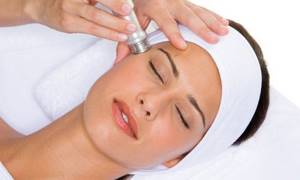
Operating principle
The elimination of impurities during vacuum cleaning is explained by the creation of an area of negative pressure, which literally sucks sebaceous plugs, comedones, and bacteria stuck in the pores from the skin. At the same time, the vacuum also provides massage, which increases blood circulation, the flow of oxygen to cells, and enhances the synthesis of collagen, which is necessary for youth and elasticity of the skin.
Period after the procedure
There are no complications from vacuum cleaning; possible temporary side effects include mild redness of the skin and moderate discomfort. All manifestations resolve on their own and do not require treatment or special care. The only recommendation is a ban on the use of decorative cosmetics on the first day after the procedure.
Contraindications
Vacuum cleaning also has contraindications that must be observed. The procedure is not recommended for:
- Cuperose.
- Increased skin sensitivity and weak blood vessels.
- Dry skin.
- Acne and inflammatory processes.
- Skin and fungal diseases.
- Acute respiratory diseases, infections.
- Exacerbation of chronic pathologies.
Price
Prices for vacuum cleaning are quite affordable, about 1000–1800 rubles per session, but the procedure must be repeated regularly, at least 1–2 times a month. Those with oily skin are advised to purchase a device for home use; the average cost of such a device is about 3,000 – 4,000 rubles.
Other methods
Which facial cleansing is better: mechanical or ultrasonic? It may be worth paying attention to less popular technologies:
- Vacuum - is an additional version of the mechanical type of cleaning using vacuum equipment. It can effectively remove deep acne and comedones, but can seriously injure the skin.
- Chemical - carried out using special preparations that are applied to the face and heated. There is a high risk of allergic reactions.
- Gas-liquid - a mixture of oxygen and carbon dioxide with a high content of vitamins is applied to the skin. This is done under high pressure, which promotes mechanical removal of acne and dead skin particles.
- Laser is a modern way to remove damaged layers of skin and acne. After the procedure, redness persists for up to two weeks, but the effect is very good.
Each woman must make her own choice between various cosmetic procedures. A dermatologist will help you decide on this.
Various methods and procedures are used in cosmetology to deeply cleanse the skin. However, the most popular are classic and ultrasonic facial cleansing. Both procedures have their enemies and admirers, each of them has both significant advantages and significant disadvantages. That is why a person who is faced with the need for deep cleansing of facial skin for the first time may have a logical question: will a mechanical or ultrasonic procedure be the most effective? To decide which is better, you should familiarize yourself with the principle of performing both manipulations, and also take into account the advantages and disadvantages of both methods.
Mechanical facial cleansing
Mechanical or classic facial cleansing is a cosmetic procedure during which the doctor manually or using a special instrument removes the contents of the pores (black and whiteheads, small inflamed elements).
Indications and contraindications
Performed in the following cases:
- presence of open and closed acne;
- small pimples;
- sallow complexion due to an abundance of acne;
- “rough” skin with acne.
It is prohibited to carry out mechanical cleansing of the face in the following cases:
- skin infections;
- allergy;
- various dermatoses;
- the presence of boils;
- sensitive and thin skin;
- the presence of a large number of large moles in the treated area;
- period;
- respiratory tract diseases;
IMPORTANT!
Mechanical cleansing is an ideal option for oily skin types, as sebaceous plugs and inflammation form most quickly on it. In addition, it is the densest and will most easily endure such a procedure.
How to do it
The procedure goes as follows:
- dirt and makeup are removed from the face;
- the doctor gently steams the skin with a special device;
- then the specialist cleans the pores using a cosmetic loop and a Uno spoon;
- if comedones cannot be removed with a special tool, then the doctor removes the contents of the pores manually, wrapping his fingers in sterile napkins;
- then the face is disinfected, sometimes quartz treatment is performed;
- after this a soothing mask is applied;
- the face is additionally treated with antiseptic powder, and the patient can go home.
IMPORTANT!
If there is a large number of acne on the face, then mechanical cleansing is carried out several times, with breaks. The manipulation itself is painful, and the skin takes time to recover.
Advantages and disadvantages
Pros:
- quick visible results;
- deep cleansing;
- indispensable for an abundance of acne on the face;
- copes with visible dirt.
Minuses:
- traumatic and aggressive;
- the skin needs a long time to recover;
- if done poorly, there is a high risk of infection spreading throughout the face and the appearance of large inflamed elements;
- After the procedure, scars and injuries appear due to inaccurate squeezing.
Although the number of disadvantages for a particular person can sometimes outweigh the advantages, nevertheless, this type of cleansing has not lost popularity for several decades.
What to choose
For those with oily and problematic skin, ultrasonic cleansing is more suitable, as it helps remove clogs and dirt from pores quickly and without side effects. Ultrasonic cleaning can be used regularly ( once every 1-2 weeks ), since with oily skin, pores clog quite quickly. Ultrasonic exposure is especially suitable for young skin that has not yet been affected by wrinkles.
Those with more mature facial skin should choose vacuum cleansing - the procedure will not only remove all impurities from the pores, but also improve the metabolism in the skin tissues and make the face more toned. Vacuum massage helps smooth out skin unevenness and activate collagen synthesis. If you are prone to swelling, this procedure is also suitable. Ultrasound cleansing is also useful for mature and aging skin, but vacuum cleansing is more “strong” in this regard. Ultrasonic exposure is a softer alternative to vacuum.
For sensitive and thin skin, it is better to do ultrasonic cleaning, as it has a very gentle effect on the skin and does not injure it. Thus, the client does not experience any discomfort after the procedure.
If your skin is dry and dehydrated, you should also choose ultrasonic cleansing - after the session, you will notice that your face has become fresher and that peeling has disappeared.
Ultrasonic facial cleansing
With this type of facial cleansing, the doctor uses a special device for ultrasonic facial cleansing. Thanks to this, the skin is exfoliated from dead cells, acne and sebaceous plugs are removed. The pores narrow, the functioning of the sebaceous glands is normalized, metabolic processes are launched, and the complexion improves. In addition to all of the above, the device provides a massage effect.
Indications and contraindications
Ultrasound facial cleansing is used to solve the following problems:
- a large number of enlarged pores;
- acne, pimples, sebaceous plugs;
- increased skin oiliness;
- dull, sallow complexion;
- uneven skin.
IMPORTANT!
This procedure has a beneficial effect on the skin, improves complexion and increases skin elasticity. But its effect is short-lived, so it is not suitable for patients with oily skin types and a large number of acne and inflamed elements. Therefore, such cleansing shows the best effect on people with minor skin defects.
Like any cosmetic procedure, ultrasound cleaning has a number of contraindications:
- allergic reactions;
- violation of the integrity of the skin;
- oncology and autoimmune diseases;
- any disease in the acute stage;
- viral infections;
- mental disorders;
- respiratory tract diseases;
- diseases of the cardiovascular system;
- the presence of implants in the treated area (silicone implants, threads);
- if the patient has a pacemaker installed.
It is also better to avoid ultrasonic cleaning after chemical peeling and skin tightening operations.
How to do it
Ultrasound cleaning is performed as follows:
- The patient’s skin is first thoroughly cleansed of dirt and makeup residues;
- then the doctor performs a light massage;
- after this, a steaming mask is applied to the skin to open the pores and make them easier to clean;
- the mask is washed off, a special mist or gel is applied to the skin;
- the skin is treated with an ultrasound device;
- after this, a soothing and anti-inflammatory mask is applied to the skin;
- after its removal, antiseptic powder is applied to the face, and the patient can go home.
When planning the procedure, it is important to consider that the duration of the procedure is from 30 to 60 minutes.
Advantages and disadvantages
Advantages of the method:
- lack of a long recovery period;
- there are practically no complications;
- There is no pain or discomfort during the procedure;
- can be combined with other cosmetic procedures.
- non-traumatic method.
Minuses:
- many contraindications;
- considerable cost;
- the effect will not be visible on skin with significant problems;
- As a rule, one session will not provide noticeable improvements, so the procedure should be performed regularly.
The non-traumatic nature of the method is both an advantage and a disadvantage of such facial cleansing. This procedure is considered ineffective, which differs from classical cleaning.
How to do vacuum facial cleansing
Over time, the classical technique in cosmetology began to be abandoned, and was replaced by complex care procedures, in which light exposure to vacuum became one of the stages of working with the skin.
It is used in the Hydrafacial technique, designed to moisturize and refresh the skin, cleanse it and nourish it with the active substances of skincare serums. The procedure quickly became popular in beauty salons and has numerous analogues. But it is a mistake to consider it cleansing in the usual sense, since it implies not so much cleansing as full-fledged care, moisturizing, and rejuvenation.
“I will not recommend vacuum cleaning in the classic version to anyone,” continues Isabella Airapetova. “This is an outdated technique that can lead to problems.” She has contraindications: spider veins on the face, a predisposition to their appearance. The procedure is not prohibited, therefore, perhaps, it is used somewhere else in beauty salons, for example in the regions. But it is not recommended in professional cosmetology.”
According to the specialist, almost every woman has contraindications to the use of vacuum. Nine out of ten women experience manifestations of rosacea to a greater or lesser extent. For many, the vessels are located close to the surface of the skin, and using a vacuum can make them more visible. The development of rosacea is influenced by stress, poor nutrition, and lack of vitamins in food, which are necessary for the elasticity of blood vessels and strengthening their walls.

Therefore, every woman should take care of the prevention of rosacea after the age of 20: eat right, regularly take multivitamin complexes and use cosmetics to strengthen the vascular wall. But you definitely shouldn’t do vacuum cleaning in a salon or at home.
